- Home
- Paul Christopher
Rembrandt's Ghost Page 14
Rembrandt's Ghost Read online
Page 14
There are two of these sprawling semislums in Labuan, Kampung Bebuloh and Kampung Patau-Patau. Both of these are tourist showplaces, full of stores and small craft-ware factories, the tin-roofed, open-walled structures connected by a maze of wooden plank walkways and accessible by water taxi. A much larger kampong ayer is occupied by several thousand Filipino squatters on the near side of the harbor.
These are Labuan’s true poor, the majority of them indentured sex industry workers employed in floating brothels in the kampong ayer as well as in bars, discothèques, karaoke lounges, hair salons, and massage parlors in the resort and hotel district. Among the knowledgeable Labuan is as important a sex trade tourist destination as Bangkok with every imaginable vice available to whoever has the money to pay.
The Batavia Queen arrived in Labuan shortly after noon, docking at the Merdeka Pier close to the ultramodern ferry terminal. From the wheelhouse Finn and Billy could see across the length and breadth of the island; according to Briney Hanson, it was flat as a pancake with its highest point no more than a hundred fifty feet above sea level. From where they stood, there was nothing but the gleaming white structures of the beach hotels and small, modern cityscape to the east and a sea of jungle green stretching off to the north. In the far distance, beyond the hotels and the gold and white onion dome of the central mosque, they could see the belching stacks of the petroleum refinery and the huge sheds of the government shipyards.
While Elisha went to the Customs House to clear their arrival and arrange for the bunkers to be topped up, McSeveney and Toshi Minimoto headed for the supermarket on Tun Mustapha Road for supplies, including several cases of Orangeboom Dutch Lager, the Batavia Queen’s beer of choice. Hanson went with Finn and Pilgrim to look for Osterman, the mysterious antiquities dealer who’d sold Pieter Boegart the little gold statue.
They took an oddly modern Panga twenty-six-foot water taxi across the bay at a breezy forty-five miles an hour and arrived at Kampung Patau-Patau ten minutes later after deftly skirting a fleet of dive boats on their way out to the ‘‘resort wrecks’’ sunk along the shoal lines of the sprinkling of atolls and small islands that stood between Labuan and the Brunei mainland. There were four wrecks that Hanson knew of: the Tung Huang, a Chinese freighter with a load of cement once destined for the sultan’s palace in Brunei; the SS De Klerke commandeered by the Japanese during World War Two and sunk by the Australian Air Force; the USS Salute, a minesweeper much like the original Batavia Queen; and a Philippine fishing trawler, the Mapine Padre, which caught fire and sank sometime in the eighties. The four wrecks and the sex trade were the real basis for Labuan’s day-to-day economy.
The taxi dropped them at a rickety-looking wooden pier without guardrails and they climbed up a bamboo ladder. ‘‘How are we supposed to find this man Osterman?’’ Billy asked, staring down the narrow plank-surfaced wharf. Facing them was a patchwork of buildings made out of everything from flattened oil drums to heavy plastic sheeting. It seemed as though every house had its own small boat anchored close by and every window opening was festooned with overflowing flower boxes. The tin roofs and the walls of a lot of the houses were painted in bright blues, yellows, and greens.
Finn shrugged. ‘‘We just ask, I guess.’’
A group of young children was playing farther along the pier, happily flinging themselves off the planks and into the sea, then climbing out again, swarming up the bamboo supports, and repeating the whole process. They were wearing an assortment of clothes ranging from nothing at all through bright white underpants to colorful sarongs. There didn’t seem to be any adult supervision, the oldest of the children clearly keeping an eye on their younger companions. Suddenly Finn found herself transported back to her childhood and her uncle Danny’s farm that backed up to Big Darby Creek just outside Maryville. She’d gone swimming just like this with no fear of drowning or being swept away and with not a worrying adult anywhere in sight. It seemed to her that the world had been a safer place then, but at least a little of it seemed to have remained in this strange, out-of-the-way place. She smiled and laughed at the kids’ antics, which were clearly accelerating and becoming noisier because the children had an audience.
Finn looked down into the water. It seemed clear and unpolluted, perhaps ten or fifteen feet deep down to a sandy bottom. The surface was remarkably clear of domestic garbage; she couldn’t see a single piece of floating plastic or anything else. The local occupants were obviously very house-proud. The boats tied up at each dwelling’s private pier were nothing more than old rowboats fitted with small outboards, but they were all freshly painted in gaudy colors like the roughly built homes, and each had a name neatly written on the prow.
As Finn and the others approached, the kids stopped playing and stood watching them silently, their eyes wide and curious. No calling out, no begging, just a silent careful assessment: friend or foe.
‘‘Di mana Osterman tuan?’’ Hanson asked. One of the kids, the tallest, who wore raggedy red shorts, pointed solemnly to a large shack with a bright blue tin roof and a window box full of blazing rhododendrons.
‘‘Tuan Osterman kedai,’’ said the boy solemnly.
‘‘That’s Osterman’s store,’’ explained Hanson.
‘‘Terima kasih,’’ said Finn, using a bit of Malay she’d picked up from Bazooki, the steward. It meant ‘‘thank you.’’
‘‘Sama-sama!’’ replied the boy, surprised and pleased.
‘‘Should I give him some money?’’ Billy asked.
‘‘Why?’’ Hanson answered. ‘‘He was just giving you directions. He doesn’t expect anything. These people aren’t beggars. They’re just poor.’’
They followed the child’s pointing finger, taking a series of ever narrowing walkways, and eventually reached Osterman’s store. The whole front of the building was open, the front wall made up of rolled bamboo blinds that could be lowered at night. The store was one big room, lined with shelves that held a bizarre assortment of items ranging from ornately framed pictures from Victorian times to a set of Asian-styled Barbie Doll knockoffs arranged in gaudy cardboard display boxes with clear plastic tops that looked like coffins. It was a junk store: Osterman was hardly what you would call an antiquities dealer, Finn thought. For a moment she wondered if the little boy outside had steered them wrong.
A man appeared from behind a bamboo curtain that sectioned off the rear of the shop. He was tall, stooped, and in his sixties or seventies. His hair was very long and stringy, and his very pale belly hung over the waist band of a soiled native sarong. He wore very out-of-date black plastic-framed glasses and he was carrying a plastic bowl and chopsticks.
‘‘Mr. Osterman?’’ Finn asked.
‘‘Call me Bernard, dear,’’ said the man. He used the chopsticks to guide a slurry of noodles into his mouth, watching his guests over the rim of the bowl. ‘‘Not browsing tourists by the look of you.’’ He smiled. The accent was German or Austrian, but the English was excellent.
Finn reached into the pocket of her shirt and took out the little gold amulet. She held it out in the palm of her hand. Bernard Osterman looked down at it but made no move to take it from her.
‘‘I was wondering if that little trinket would come back to haunt me,’’ he sighed.
‘‘You sold it to a relative of mine. Pieter Boegart,’’ said Billy.
‘‘That’s not what he told me his name was. I knew he was Dutch. He said his name was Derlagen.’’
‘‘That’s his lawyer.
‘‘One of the Boegarts?’’
‘‘The black sheep,’’ said Billy.
‘‘I know that feeling myself,’’ Osterman said, smiling.
‘‘He must have come here for a reason,’’ said Finn. ‘‘I don’t think he was a browsing tourist any more than we were.’’
‘‘Quite right, dear.’’ He paused. ‘‘I’m not sure I see your part in all this.’’
‘‘Pieter Boegart is my relative, as well,’’ she answered, rea
lizing that she was admitting to her mother’s infidelity at last and perhaps even to her own paternity. Somehow it didn’t seem to matter so much now.
‘‘I see . . . I suppose,’’ murmured Osterman, looking back and forth between Billy and Finn.
‘‘How did Pieter Boegart find you?’’ asked Billy.
Osterman smiled again and slurped up some more noodles. He put the bowl and chopsticks down on a nearby table and gave a small contented belch. ‘‘I learned my trade in Berlin as a very young boy, six or seven or so, too young then even for the Deutsches Jungvolk. To survive in Berlin after 1945, you learned a great many things, but above all you learned to trade one thing or another until you found what you wanted. You also learned to do whatever was neccessary along that path to find what you wanted or to stop others from finding it first. Whatever was necessary, no matter how unpleasant. Most important you traded in information. You, as they say, kept your ear to the ground. Later, when it became necessary for me to leave Berlin and to come eventually to this godforsaken place, I simply applied the same principles, you see?’’
‘‘Not really,’’ said Finn. ‘‘But you still haven’t told us how you got the little gold figure.’’
‘‘Do you know what it is?’’
‘‘It’s from Mali,’’ answered Finn. ‘‘Fourteenth century.’’
‘‘From the reign of Mansa Musa, the king of Mali and Timbuktu, the first of his race to make Haj to Mecca. Yes, yes, all the old stories about King Solomon’s mines and your Rider Haggard, but that is not the real answer.’’
‘‘Why don’t you tell us, then?’’ said Hanson.
‘‘The real answer is where the figure was found and how it came to be there.’’
‘‘So where was it found?’’ Finn asked.
‘‘Such information should be worth something, don’t you think?’’
‘‘How much did Pieter Boegart pay?’’ Billy asked.
‘‘You are not he. This is another transaction.’’
‘‘You sent Pieter Boegart somewhere, perhaps to his death,’’ said Finn. ‘‘Pieter may well have been the black sheep of his family, but he was a Boegart and I’m sure the police would be interested in the fact that you were the last person known to have seen him. I wonder how you’d like a bunch of policemen crowding around in here, making a mess of things.’’
‘‘You are far too pretty a woman to be making such threats.’’
‘‘I’m not pretty,’’ said Billy. ‘‘Would it make any difference if it was me making the threats?’’
‘‘Not in the slightest,’’ sighed Osterman. ‘‘But I think it is a very unpleasant way to treat an old man.’’
‘‘What about the figure?’’
‘‘It was in the hands of a rather unscrupulous fellow named Wei Yang. He knew I liked such things so he traded it to me.’’
‘‘Where do we find this Wei Yang?’’ Hanson asked.
‘‘He had a shop on Dewan Street, but he is no longer there.’’
‘‘Where is he?’’
‘‘Perhaps the morgue? In an ornamental urn somewhere? With his ancestors at any rate. He was found floating under the barter trade jetty by the fish factory with his belly slit and his eyes gouged out. He was also missing several fingers on one hand and it was not from the fish nibbling at them.’’
‘‘Who did it?’’
‘‘Who knows?’’ Osterman shrugged. ‘‘This is Borneo. Kalimantan—call it what you want. The world’s last mystery. They still have tribes who collect human heads and shrink them. They sew the teeth back in and hang them from the rafters of their longhouses. You can hear the teeth rattling like wind chimes in the night. I’ve heard it myself. Wei Yang was a bullion dealer among other things, and a smuggler. He dealt with the Dyak gold prospectors from the interior, from the hutan, the deep jungle, and he dealt with the penyeludup, the smugglers, as well. It could have been any one of them, because he cheated them all at one time or another and everyone knew it.’’
‘‘And you knew where he got the gold figurine, don’t you?’’ Hanson asked.
‘‘A smuggler named Lo Chang. Part Chinese, part God only knows what.’’
‘‘Where did Lo Chang get it?’’ Finn asked.
‘‘According to Wei Yang he didn’t say.’’
‘‘Or wouldn’t.’’
‘‘Or wouldn’t,’’ agreed Osterman.
‘‘So where do we find this Lo Chang fellow?’’ Hanson asked.
‘‘He operates a boat called the Pedang Emas out of Kampong Sugut. Makes the run to Zamboanga. Does a bit of piracy, as well. He’ll be somewhere between the two, I’d think.’’
‘‘Where’s Kampong Sugut?’’ Finn asked.
‘‘Just north of Labuk Bay on the Sulu Sea,’’ said Hanson. ‘‘Below the Tegepil Shoals at the mouth of the Sugut River. Chang lives there with a woman named Cai Quin Ma. She runs one of his brothels. Looks like a goat in a dress. Can’t miss her.’’
They found another water taxi and returned across the broad expanse of the bay to Labuan City. Everyone was back on board; Labuan didn’t have too much to offer if you weren’t interested in illegal sex or offshore banking. Toshi was in the galley rustling up an aromatic lunch and Elisha Santoro was in the wheelhouse waiting for them with a set of charts spread out in front of him.
‘‘I hope we’re not going north,’’ he said, a worried expression on his young, handsome face. He scratched his eyebrow above the patch.
‘‘Why’s that?’’ Hanson asked.
‘‘I was just at the meteorology office in town. There’s a typhoon brewing in the Sulu Sea. A big one. They’re saying it might go to plus ten. Supertyphoon.The barometer’s dropping like a rock.’’ He looked at Finn and Billy. ‘‘Why, where are we heading?’’
‘‘North,’’ said Hanson. ‘‘Into the Sulu Sea.’’
17
Pedang Emas was a hundred-foot-long, hundred-ton wood-and-iron whaling ship with a history that predated the Titanic. She’d begun life in 1907 as a small-scale Swedish factory ship built by Nyland Versted in Oslo with the designation Hull133. She was sold to an Icelandic company and given the name Haraldur Kristjánsson.
In 1921 she was transferred to a New Zealand whaling company and renamed Rangitoto. Nine years after that, she was returned to Scandinavian waters and sold to the Stavanger Sardine Company, maker of the Royal Brisling brand, ostensibly as a fishing vessel but actually outfitted as a yacht for the chairman of the company. A lavish owner’s cabin was built over the main hatch, and the hold was used for small cargo and an oversized fuel tank.
Her name was changed to Kristianiafjord, but a few years after her extensive refit, with war beginning to loom, she was leased to the Royal Norwegian Navy as a watch boat and was renamed King Haakon VII in honor of the aging monarch of the country.
Inevitably the German Navy took the little ship over in April of 1940 and didn’t call it anything; they simply painted over the name on the bow and painted an identification number on the funnel. Her engines were removed and she was refitted with two-thousand-horsepower diesels for use as a patrol boat with a top speed of eighteen knots and a Nazi Kreigsmarine pennant where the sardine company’s flag used to fly.
After the war she had a long career as a coastal steamer under the name Hammerfest, her far northern home port, but by the late nineties regulatory changes in the crewing of Norwegian ships made her too costly to run, especially with those big deisels. She was sold back and forth half a dozen times until she was finally bought and refurbished by a retired Canadian dentist with a cocaine habit renamed her the Atropos after Horatio Hornblower’s first ship in the immensely popular series of books about a young officer in the Royal Navy during the Napoleonic Wars.
It was just about as much as the dentist knew about the sea. He hired the wrong crew in Singapore who accidentally discovered his stash of coke and waited until they were deep in the Palawan Passage before they slit his throat and belly and fed him t
o the sharks. Lo Chang had not been quite truthful to the Surfer Dude Bandit about events following the death of the foolish dentist.
In fact it was Lo Chang himself who fed the dentist to the sharks, and later did exactly the same thing to his partner and the rest of the crew after getting them smashingly drunk. This was shortly following their meeting with the mad little Japanese sailor on the raft. Lo Chang, being illiterate and not very bright, had no idea of the significance of the stamp on the ten-tola bar of gold. He only knew that it was gold and he wanted whatever there was for himself alone. Besides, he didn’t really need much of a crew to pilot the Atropos, or Pedang Emas as she was now called.
Four days out of Zamboanga, after delivering another shipment of young girls to the sex clubs there, he returned with a cargo of five hundred Negros fighting cocks crammed into split bamboo cages stolen from a top breeder in the hold. At between a thousand and fifteen hundred dollars a bird, his profit was going to be enormous. In Borneo and the Philippines, it was said that there were three landmarks in every village—the market, the church, and the local cockpit. They were stinking up the little hold, making horrible noises and dirtying everything they touched, but the money would make it worthwhile.
The only thing worrying Lo Chang was the weather. He never bothered with the expensive navigation and meteorology equipment installed by the unfortunate dentist. In the first place, he didn’t know how it worked and couldn’t read the results anyway, and in the second place, when he hadn’t been in jail, he’d spent most of his life at sea and intuitively knew when the weather was changing. There wasn’t a cloud in the sky, the sea was dead flat calm, and the air was hot, all perfectly normal for this time of year, but there were signs.
Standing in the squat little wheelhouse ahead of the Lido deck awning, Lo Chang kept both doorways open but there was no cross-draft. In fact there was no wind at all—only a strange, uncomfortable oppressive feeling along with the flat, almost surly roll of the ocean. The color was wrong too; the water had a gray, almost silver light in it, muting the green and making everything look as though it would taste like licking a doorknob. Ozone, was that what they called it? He leaned forward and blew into one of the old-fashioned speaking tubes beside the wheel.

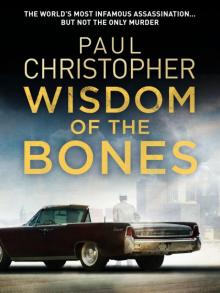 Wisdom of the Bones
Wisdom of the Bones The House of Special Purpose
The House of Special Purpose The Second Assassin
The Second Assassin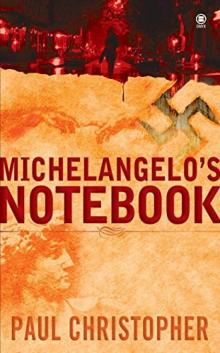 Michelangelo's Notebook
Michelangelo's Notebook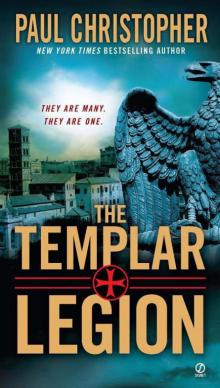 Templar Legion
Templar Legion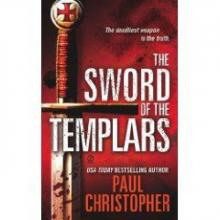 The Sword of the Templars t-1
The Sword of the Templars t-1 Red Templar
Red Templar The Aztec Heresy
The Aztec Heresy The Templar Legion
The Templar Legion Rembrandt's Ghost
Rembrandt's Ghost Sword of the Templars
Sword of the Templars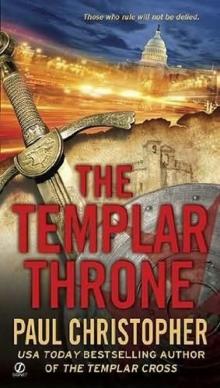 The Templar throne t-3
The Templar throne t-3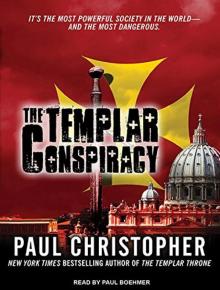 The Templar Conspiracy
The Templar Conspiracy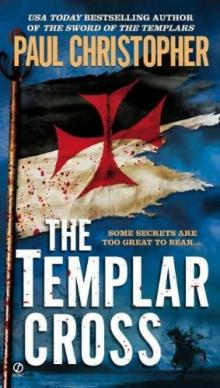 The Templar Cross t-2
The Templar Cross t-2 The Templar Legion t-5
The Templar Legion t-5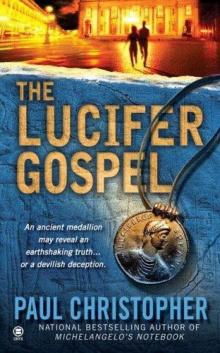 The Lucifer Gospel
The Lucifer Gospel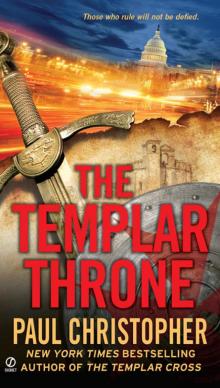 Templar Throne
Templar Throne Michelangelo_s Notebook fr-1
Michelangelo_s Notebook fr-1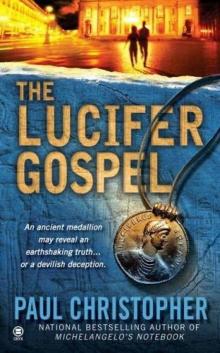 The Lucifer Gospel fr-2
The Lucifer Gospel fr-2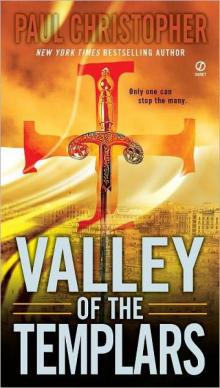 Valley of the Templars ts-7
Valley of the Templars ts-7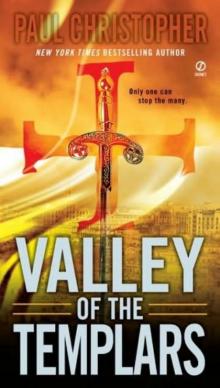 Valley of the Templars
Valley of the Templars Templar Cross
Templar Cross The Templar Throne
The Templar Throne The Templar Cross
The Templar Cross Lost City of the Templars
Lost City of the Templars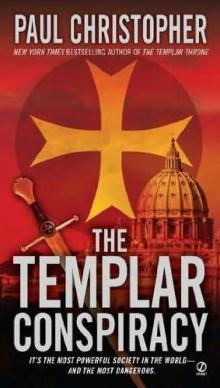 The Templar conspiracy t-4
The Templar conspiracy t-4 Templar Conspiracy
Templar Conspiracy